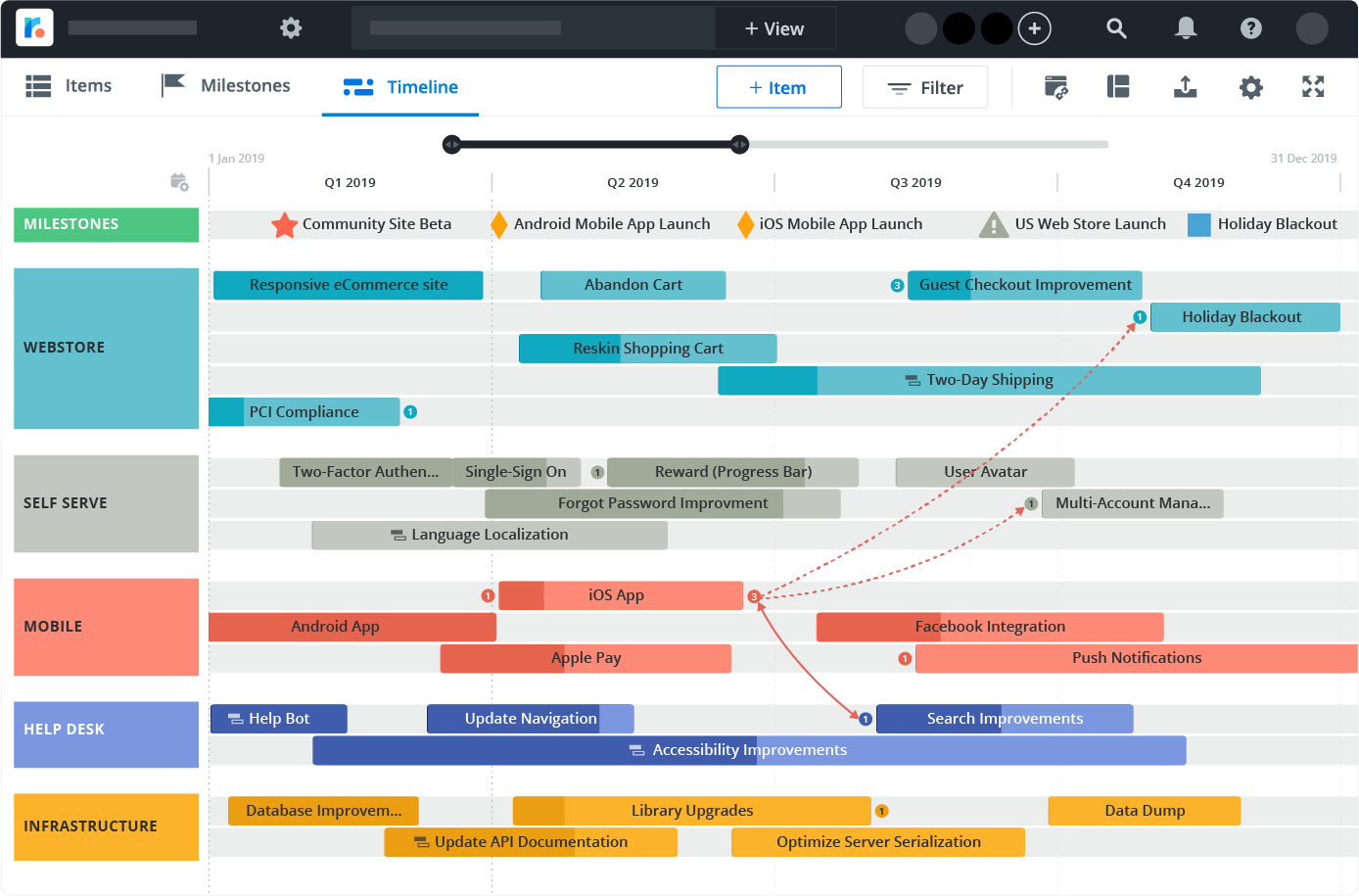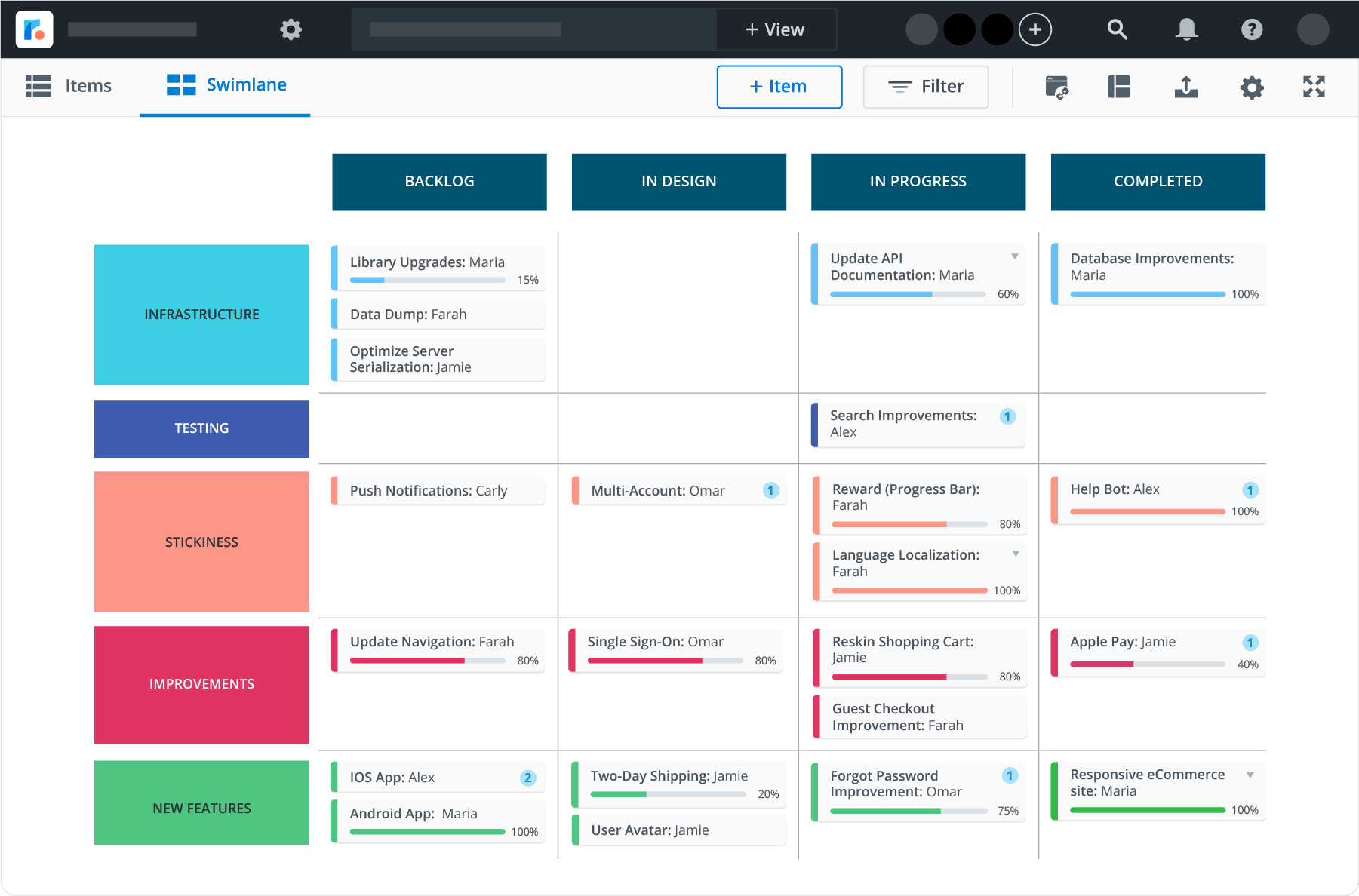The product roadmap seems like a pretty straightforward document. You take your initiatives and plot them along a timeline or by themes, present them to your stakeholders, then move on to do more important product managing stuff.
Well, if that was true, we wouldn’t have written an entire guide about product roadmapping.
In reality, the product roadmap is a complex strategic tool that involves a lot of preparation, planning, people managing, research, organization, prioritization, and TED talk-level presentation #skills. See how we called it a tool and not a document? That’s because it’s not meant to be as static as a Microsoft Office file.
When you invest time, effort, and money (ahem, on a roadmapping tool like Roadmunk ?) on your product roadmap, it can positively impact things like alignment, buy-in, and strategic organization at the business, product, stakeholder and product team levels.
But enough about why you (definitely, absolutely) need a product roadmap if you’re a product manager. Let’s get into some common questions and confusions about the product roadmap.
Ready to start building better roadmaps? Check out our in-depth guide here
1. Can my product roadmap also double as a release plan?
Probably not. Most of the time, release roadmaps are thought of as tactical engineering plans that have low level information, such as user stories or tasks. In comparison, your product roadmap is trying to serve a greater purpose. It’s trying to explain to your organisation why you’re going in a certain direction. Also your product roadmap wants to illustrate long term items that may be important for your audience as well as your customers to understand exactly where you’re going.
To recap, a release roadmap is a bit more technical and granular whereas your product roadmap shows the direction of your product and your organisation.
Start building your own release roadmap using this template.
2. Why can’t I just use a product backlog without a product roadmap?
In a small company, your product backlog often starts out as the roadmap and that’s okay! However, as your company scales, the product roadmap communicates why you’re building something and its customer value as well as a little bit of the what that’s being built. In comparison, a product backlog is almost entirely what you’re building to accomplish your product team’s vision.
3. Who owns the product roadmap?
The product manager owns the product roadmap! Not your executives, engineering, marketing or your sales reps.
As a PM, you’re responsible for making sure that these stakeholders are bought into your plan and understand the tradeoffs made to generate the most customer and market value. However, even with stakeholder feedback, the PM is fully responsible for going forward and making sure they’re accountable to fulfill the vision.
4. What does a product roadmap look like?
This depends on your organisation. If you’re a brand like Apple, then you have to align your company to September when products are launched. With a specific schedule in mind, it’s more appropriate to use a timeline view to help achieve the end goal.

Whereas if you’re an organization that’s more agile and flexible, you can use something that’s not time based. For example, a swimlane view, where things come out either in seasons or just in different statuses would be fitting.

Check out our libray of 35+ roadmap templates. Access them for free by signing up for a Roadmunk trial.
5. How often should I update the product roadmap?
Meeting with stakeholders twice a month, monthly or quarterly are all common benchmarks to help align your teams to your product roadmap.
Keep in mind that there are three inputs to a product roadmap: feedback, progress and major changes.
-
Feedback
It’s really important that all the feedback you get from your customers, your internal stakeholders or your sales channels are being updated all the time into your product roadmaps. This enables you to get the insights you need to make great decisions and continue evolving your product. -
Progress
It’s important that your organization sees how far along the journey you are. So wherever you can, at certain increments, find a way to present that information so stakeholders can understand how the product is progressing. -
Major changes
This could be the introduction of large scale initiatives or a change in strategy. Since we know those happen all the time, it’s really important to make sure that those decisions are made at specific points.
Start building beautiful + collaborative roadmaps with Roadmunk. Signup for a free trial here.




